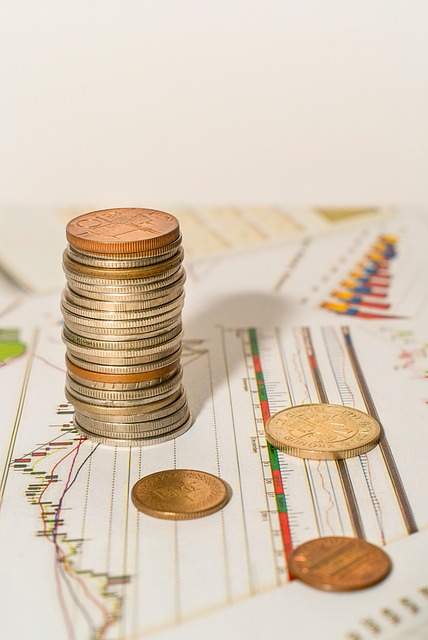Investing in gold: how it works and what you need to know
Since ancient times, gold has been one of the most widespread means of payment and a reliable way to preserve savings. And although paying for goods or services with precious metals is no longer common, investing in gold still remains quite popular.Interest in such investments especially grows during times of instability: sharp spikes in inflation and fluctuations in financial markets can lead to the devaluation of currency or stocks. But gold — whether a physical bar or the right to own it — always retains its value.

Gold investment represents one of the oldest forms of wealth preservation, attracting both seasoned investors and newcomers seeking portfolio diversification. As economic uncertainties persist globally, understanding the mechanics of gold investing becomes increasingly valuable for making strategic financial decisions.
What are investments in gold?
Investments in gold involve purchasing gold in various forms as a means of preserving wealth, hedging against inflation, or potentially generating returns. Unlike stocks or bonds, gold is a tangible asset that has maintained intrinsic value across cultures and centuries. Investors can approach gold investment through multiple avenues, each offering different levels of accessibility, storage requirements, and potential returns. The fundamental appeal lies in gold’s historical role as a safe-haven asset during times of economic turbulence, currency devaluation, and market volatility.
Types of investments in gold
Several distinct methods exist for investing in gold, each catering to different investor preferences and financial goals. Physical gold includes coins, bars, and jewelry, offering direct ownership but requiring secure storage solutions. Gold exchange-traded funds (ETFs) provide exposure to gold prices without physical possession, trading like stocks on major exchanges. Gold mining stocks offer indirect exposure through companies that extract and process gold, though these investments carry additional business risks. Gold futures and options contracts allow sophisticated investors to speculate on future price movements with leverage. Additionally, gold certificates and digital gold platforms offer modern alternatives that combine convenience with precious metal exposure.
How the price of gold is formed
Gold pricing operates through a complex interplay of global supply and demand factors, with the London Bullion Market Association serving as the primary international benchmark. Central bank policies significantly influence gold prices, as monetary expansion often drives investors toward precious metals as inflation hedges. Economic indicators such as interest rates, currency strength, and geopolitical tensions create price volatility. Mining production costs establish a fundamental price floor, while industrial demand from electronics and jewelry sectors provides additional support. Market sentiment and speculative trading can cause short-term price fluctuations that may deviate from underlying fundamentals. The spot price reflects immediate delivery, while futures contracts indicate market expectations for future valuations.
Benefits and risks of investing in gold
Gold investment offers several compelling advantages, including portfolio diversification benefits and protection against currency debasement. Historical data demonstrates gold’s ability to maintain purchasing power over extended periods, making it an effective long-term store of value. During market downturns, gold often exhibits negative correlation with traditional assets, potentially reducing overall portfolio volatility. The precious metal also provides a hedge against inflation, as rising prices typically correspond with increased gold valuations.
However, gold investment carries notable risks that investors must consider carefully. Unlike dividend-paying stocks or interest-bearing bonds, gold generates no income, relying solely on price appreciation for returns. Storage and insurance costs can erode profits, particularly for physical gold holdings. Market volatility can result in significant short-term losses, and gold prices may underperform other asset classes during certain economic cycles. Liquidity concerns may arise with certain gold investment vehicles, and tax implications vary depending on the investment method chosen.
| Investment Type | Provider/Platform | Cost Estimation |
|---|---|---|
| Physical Gold Coins | APMEX, JM Bullion | $50-100 premium per ounce over spot price |
| Gold ETFs | SPDR Gold Shares (GLD), iShares Gold Trust (IAU) | 0.25-0.40% annual expense ratio |
| Gold Mining Stocks | Newmont Corporation, Barrick Gold | Standard brokerage fees ($0-10 per trade) |
| Gold Futures | CME Group, Interactive Brokers | $2-5 per contract plus margin requirements |
| Digital Gold | PAXG, Vaulted | 0.02-0.45% annual storage fee |
Prices, rates, or cost estimates mentioned in this article are based on the latest available information but may change over time. Independent research is advised before making financial decisions.
How to start investing in gold
Beginning a gold investment journey requires careful planning and consideration of personal financial objectives. First, determine the appropriate allocation percentage for gold within your overall portfolio, with many financial advisors suggesting 5-10% as a starting point. Research different investment vehicles to identify options that align with your risk tolerance, storage capabilities, and liquidity needs. Establish accounts with reputable dealers, brokers, or platforms that offer transparent pricing and secure transactions.
For physical gold purchases, verify dealer credentials and compare premiums across multiple sources. Consider storage options, including home safes, bank safety deposit boxes, or professional vault services. When investing through ETFs or mining stocks, evaluate expense ratios, tracking accuracy, and underlying holdings. Start with smaller positions to gain experience and gradually increase exposure as comfort and knowledge develop. Regular monitoring of gold prices and market conditions helps inform timing decisions, though dollar-cost averaging can reduce the impact of price volatility over time.
Successful gold investing requires ongoing education about market dynamics, economic factors, and regulatory changes that may affect precious metal investments. Consulting with financial professionals can provide personalized guidance based on individual circumstances and investment objectives.




